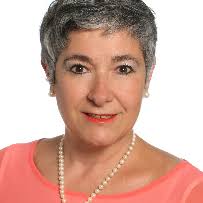TRIBOLOGY DISCUSSIONS
A series of discussions to learn and to be inspired by TRIBOLOGISTS
LEARN ABOUT WIND ENERGY
FINDING SOLUTIONS TO FRICTION, WEAR AND LUBRICATION PROBLEMS RELATED TO RENEWABLE ENERGY
- 10:00 AM (Amsterdam)
- 2:30 PM (New Delhi)
- 4:00 AM (New York)
Register Now

Dr. Amaya igartua
Coordinator of materials Initiatives, Co-secretary of the EUMAT Materials Platform, Tekniker, Spain

Dr. Taco Mets, Mr. Patrick Kostelijk
Van Meeuwen Lubrication, Netherlands
.jpg?width=151&height=203&name=Webp.net-resizeimage%20(2).jpg)
Dr. Balasubramaniam Vengudusamy
Senior Research Tribologist, Kluber Lubrication, Germany
OCTOBER - NOVEMBER 2020
Dr. Markus Grebe, Competence Center for Tribology Mannheim, Germany
The lecture presents the current state of research in the field of false brinelling and standstill marks. Main topic will be the differences between brinell marks (plastic deformation), false brinelling marks (due to small swivel movements) and standstill marks (due to vibrations, micro movements). This research work is becoming increasing relevant in connection with wind turbines due to the fact that the newest control technologies like individual pitch control (IPC) lead to more critical loading of the pitch bearings. With IPC the pitch bearings oscillate at angles of a range of less than one up to several degrees. This requires a detailed analysis of both types of damage, false brinelling (larger pivoting angles) and standstill marks (small pivoting angles or vibration).
The webinar is interesting for scientists and engineers who develop machines with roller bearings under small swivel movements or vibrations. The audience get to know the current status of research in this special field of roller bearing damages.
Dr. Amaya Igartua, Tekniker, Spain
The lecture presents lubrication challenges in wind turbines, including the use of environmentally friendly renewable lubricants. The explanation includes tailored tribological test carried out at laboratory scale model (ball on disc) and simplified component (gear or bearings) in order to assess the performance of the lubricants, before filling the windmills. Also, it is highlighted the importance of the laboratory control of the status of the lubricants during use and the support of tribological test to define critical limits of certain parameters being monitored (viscosity, acidity index). Finally, it is presented the challenges of using on-line sensors to monitor the status of the lubricants.
The webinar is interesting for scientists and engineers who develop tribological solutions or maintain the wind-mill turbines to increase the efficiency and reduce cost. The audience will get knowledge about the current status of research in this special field of windmill lubrication and control.
Advanced Materials Research in Horizon Europe
The European Commission has published the document “The Role of the Materials in Post Covid society” prepared by the EUMAT and A4M. In the document, it is highlighted the relevance of tribology in materials research. Durable and energy efficient materials and products are needed that are re-usable and repairable, with extended lifetime and functionality. Recycled materials can be upgraded for re-use as secondary materials using coatings. Materials design for use in demanding situations can be achieved with accelerated tribological, fatigue and corrosion studies. Technology exists to simulate, at a laboratory level (field to lab), the working conditions of the component in the system, and to reproduce potential failure mechanisms. This allows for a laboratory determination of the estimated lifetime of an unused component, or the remaining life of an ex-service part, which can be extrapolated (lab to field) to predict the behaviour of the materials in the real applications. The Characterization and Modelling working group in EUMAT deals with these technologies.
Dr. Taco Mets and Mr. Patrick Kostelijk Van Meeuwen, Netherlands
The lecture presents the current state of research in the field of Biodegradable, Environmentally Acceptable Lubricants (EAL) in relation to bearing failures. Main topic will be the differences in EAL’s and how they behave in in operation. Focus will be on hydrolysis and oxidation stability as well as their additive packages. This research work is becoming increasingly relevant in connection with stern tubes due to the fact that after the 2013 EPA Vessel General Permit (VGP) has become in force, the number of stern tube failures has increased. Either design, alignment or the use of EAL’s might be the cause of these increasing numbers. With increased loads and smaller margins on stern tube bearings the use of right lubricant has become more and more critical.
The webinar is interesting for designers, engineers, asset owners who develop and maintain bearings and equipment which, by environmental regulations, are forced to use EAL’s. The audience get to know the current status of research in this special field of different EAL’s and their relation to bearing failures.
The talk will cover lubrication of wind turbine components including main and blade bearings and gearbox, related tribological challenges and damage mechanisms. Wind turbine components experience varying conditions ranging, for instance, from limited rotation (e.g. blade bearing) to full rotation (e.g. main bearing, gearbox & gearbox bearings), which demands for lubricants covering all lubrication regimes (boundary through to EHL). Lubricant evaluations cannot generally be made on wind turbine-scale bearings and gears, hence lab-scale model/representative tribological tests play an important part while making lubricant selection. There are some standard set of widely used tests to evaluate some basic functionalities of greases like EP (4-ball test), AW (FE 8 test), corrosion (EMCOR), low temperature torque (IP 186), false brinelling, etc. Most of these tests are valid for oils too, although there are other additional requirements to be met, for example micropitting resistance. Some problems like WEC (white etching cracking) are much less understood but have become more prominent in the last few years. Focus of this talk will be on how lubricant selection is made for wind turbine application and the existing gaps.
%20-%20PNG.png?width=925&height=246&name=Ducom%20-%20Logo%20-%20Full%20-%20Vector%20(90%20Gray%20and%20Light%20Blue-Inverted)%20-%20PNG.png)